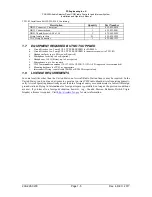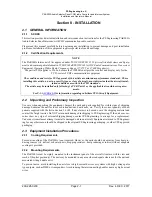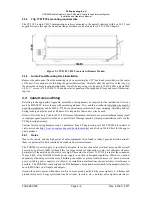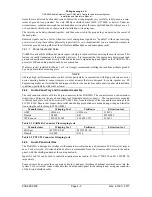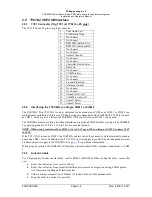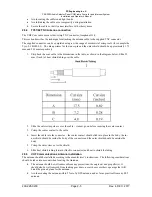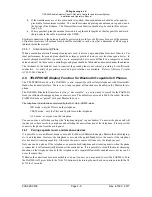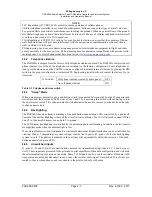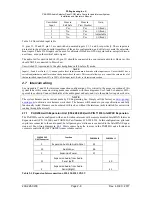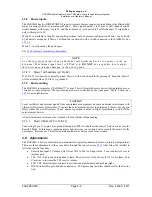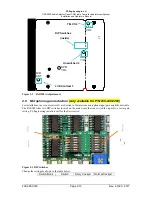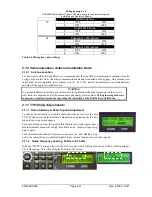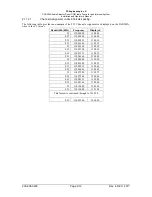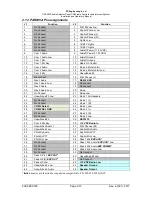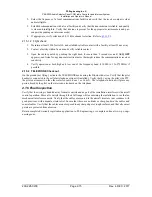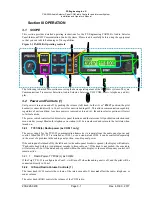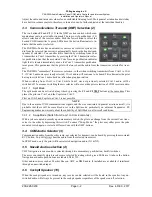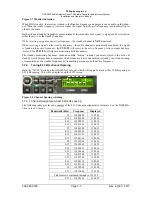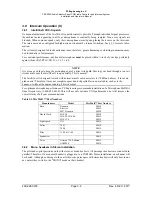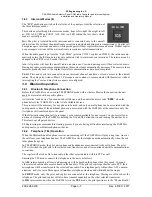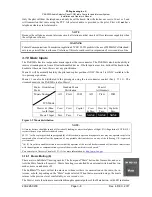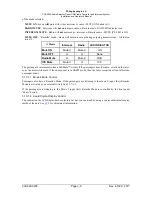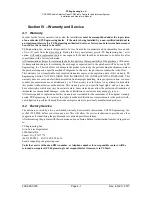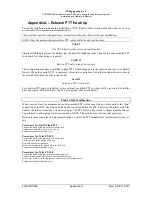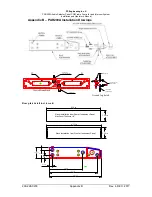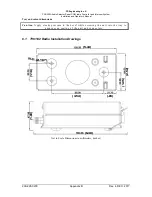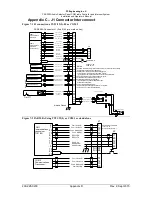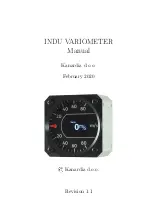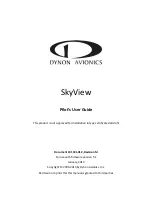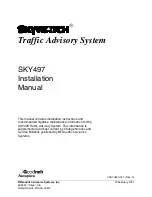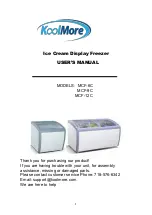
PS Engineering Inc. ®
PAR200A Audio Selector Panel, COM radio Controller and Intercom System
Installation and Operator’s Manual
200-228-0200
Page 2-14
Rev. 4, DEC. 2017
2.13 Post Installation Checkout
After wiring is complete, verify power is ONLY on pins 8, and 9 of the J2 and airframe ground on connector
pins 10, and 11. Failure to do so will cause serious internal damage and void PS Engineering's warranty.
2.14 Unit Installation
To install the PAR200A, gently slide the unit into the mounting rack until the hold-down screw is engaged.
While applying gentle pressure to the face of the unit, tighten the 3/32" hex-head in the center of the unit
until it is secure. DO NOT OVER TIGHTEN.
CAUTION
Apply steady pressure to the bezel while screwing the unit into the tray to ensure even seating of the unit and
connectors.
WARNING
Do not over-tighten the lock down screw while installing the unit in tray.
Internal damage will result.
2.15 Operational Checkout
NOTE
The
IntelliVox
® is designed for ambient noise levels of 80 dB or above. Therefore some clipping may occur
in a quiet cabin, such as without the engine running, in a hangar. This is normal
.
1.
Apply power to the aircraft and avionics.
2.
Plug headsets into the pilot, copilot, and occupied passenger positions.
3.
Verify fail-safe operation by receiving and transmitting on com 1 from the pilot position, with the audio
panel power off. The Com audio will be present in one ear cup only.
4.
Switch on the unit by pressing the volume (VOL) knob.
5.
Check intercom operation.
6.
Push the Com 1 Xmt select button (lower row).
7.
Verify that both of the
C1
buttons light. Verify that transmit button LED (Light Emitting Diode) near
the mic selector is not blinking. If the LED is blinking, stop testing and troubleshoot the microphone
PTT installation.
8.
Verify proper transmit and receive operation from the copilot position, noting that the copilot PTT switch
allows proper transmission on the selected transceiver. Verify that the C1 Xmt button blinks when trans-
mitting.
9.
Verify that pushing the
C2
button causes the button to illuminate, and the Com 2 receiver to be heard.
Verify operation on Com 1 from the pilot position.
10.
Repeat for Com 2
11.
Press and hold the C1 Xmt button. While holding the Com 1 button, press the Com 2 Xmt button. This
places the unit in “Split Mode;” Verify that the pilot can transmit and receive on Com 1, while the copilot
transmits and receives on Com 2.
12.
Verify proper operation of all receiver sources by selecting them using the appropriate means. The N1
and N2 indicators illuminate to show which navigation audio source is in use.
13.
Verify that the appropriate LED in the lower button row blinks when either push to talk is keyed.
14.
Verify proper Intercom system operation in the
A
LL
, I
SO
and
C
REW
modes (see Table 3-1).
15.
Verify that the audio selector panel system does not adversely affect any other aircraft system by sys-
tematically switching the unit on and off, while monitoring the other avionics and electrical equipment
on the aircraft.
2.15.1 TY91/92 Checkout
2.15.1.1 Ground check:
1.
Connect an in-line type watt meter and verify that the antenna VSWR does not exceed 2:1 across
the frequency band from 118.000 to 137.000 MHz

